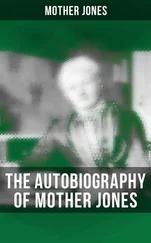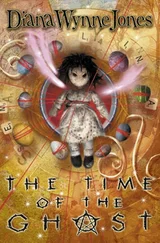Soon after the collapse of the Sumerians, the Greek polis or city-state appeared. Its philosophy — and its name — is at the basis of modern politics. The Iliad and the Odyssey are accounts of wars among the first poleis, which included Corinth, Sparta and Athens. Greece entered its classical age. This was a triumph in artistic, economic and political terms. Three thousand years ago Greece was the most densely populated country in Europe. Its inventive people expanded to form Greater Greece, Magna Graeca, an empire that extended from the Caucasus to Spain. Forty towns in southern Italy were Greek. They included Syracuse, then the biggest city in the world, and Sybaris, a byword for wealth.
Patterns of blood groups and enzymes show that today's southern Italians and Sicilians are distinct from their compatriots to the north and share many genes with the population of modern Greece. The DNA of the first European states remains as a witness to their past. Sardinians, too, owe their distinctiveness to an ancient nation-state. They are related to the modern Lebanese, whose country occupies the territory of the Phoenicians, once the greatest traders of the Mediterranean.
Greeks, unlike Sunierians or Phoenicians, are still around as a reminder of the past. At about the time of the Greek Empire, central Italy supported another buoyant economy; that of the Etruscans, now the embodiment of obscurity. They lived in cities of half a million people and were skilled metal workers with, according to their Latin neighbours, a feminine and dreamy personality. Dreamy though they were, for a brief period their empire encompassed Rome itself. Almost no relics are left. The word Tuscany' refers to their homeland, and some enigmatic sculptures with a characteristic smile remain as does an eccentric object, a bronze sheep's liver covered in messages, used as a crib by the priest as he disembowelled the sacrificial lamb. These hints from the past were, until recently, all we knew about the Etruscan nation.
Its heritage has not been lost. Between the Rivers Arno and Tiber — modern Umbria — is a region distinct from its neighbours. It retains sonic of the genes of the Etruscans. Theirbiological legacy lives on in their descendants, although their language and culture are long gone.
Many movements involved commerce rather than conquest. Often, the traders left generical calling-cards. The Silk Road passes from the ancient Chinese city of Changan to the Mediterranean. It has been a trade route lor more than two thousand years and for much of this period was the main artery of cultural exchange. Silk passed from east to west; in return came cotton, pomegranates and Buddhism. Modern China has few of the genetic variants in haemoglobin, the red blood pigment, which are common elsewhere in the world, but the blood of today's Silk Road reveals a trail of variant haemoglobin genes. They came from the Mediterranean and spread, with the traders, along this ancient trackway. At its western end in China, about one person in two hundred carries an abnormal haemoglobin, while at the distant eastern end this drops to one in a thousand.
Other dispersals involved forced migration. Stalin moved thousands of people from the Crimea to Central Asia, and today's movements of minorities across Eastern Europe after the collapse of Communist regimes will have genetical consequences (although in the Balkans at least it seems that past turmoils have already led to so much blending that ethnic boundaries, cause of conflict as they are, do not reflect genetic change).
Often, there have been attempts to re-unite peoples fragmented by history. In the 1920s, Greeks (whose ancestry could be traced from Magna Graeca itself) were exchanged withTurks who found themselves marooned in modern Greece. Greek-speakers, many of whom incorporated Byzantine genes, were moved from as far east as the Caucasus. Part of the drive toward nationhood was the desire for unity among peoples who share a culture. Dr Johnson put it well: 'Languages are the pedigree of nations'.
The potency of speech in forming an identity is illustrated by the Statutes of Kilkenny of 1367. At that time, the English had subdued only that part of Ireland around Dublin known as the Pale. Everything beyond was seen as barbarous. The authorities were alarmed by the encroachment of the natives, which went as far as marriage with the settlers. The Statutes declared that \. now, many English, forsaking the English language, manners, mode of riding, laws and usages, live and govern themselves according to the manner, fashion and language of the Irish enemies, and have also made divers marriages and alliances between themselves and the Irish enemies, whereby the said land and the liege people thereof, the English language, the allegiance due to our Lord the King, and the English laws are put into subjection and decayed, and the Irish enemies exalted and raised up contrary to reason. Therefore, if any Englishman or Irishman dwelling among the English, use Irish speech, he shall be attainted and his lands go to his lord.'
In Ireland the Dublin government still struggles to save the almost extinct Irish speech of the Gaeltacht and, in a matching historical obsession north of the border, not until 1992 was the ban on the use of Gaelic street names in Northern Ireland lifted. For six hundred years two nations who share a small island have tried to retain their identity with language; an attempt which, bizarrely enough, has survived the death of one of the tongues involved.
Any entity, be it a language or a pool of genes, which remains isolated from its fellows will begin to evolve away from them. Biological evolution has parallels in the origins of new languages from a shared ancestor. The analogy between linguistic and biological change is a deep one. Language barriers slow the movement of genes, and linguistic obstacles may mark a gen uric step. What is more, trees of language sometimes resemble those of genes, as a hint about a common history.
The world has five thousand different languages. Many more — like Etruscan — are extinct. Like genes, languages evolve because they accumulate mutations. Some words change quickly while others are more conservative. Although the Victorians claimed that within a hundred years English and American would be mutually unintelligible, most languages retain enough of their identity tor a sufficient long period of time to be, like genes, clues about the past.
Sometimes the barriers are scarcely noticeable. England can be divided into zones defined by whether people do or do not pronounce the final letter 'r' in words such as 'car'. I do not — I say caH because I was brought up in Wales and on Merseyside, but many of those in Cornwall, Lincolnshire or Northumbria (and plenty of Americans) pronounce it as caR. This might seems trivial, but such tiny differences can mount up to build a barrier to the exchange of information until a new language — and often a new people — is born.
Italy has several dialects, some of which trace certain words to their Greek past. Other local tongues also reflect history. A Portuguese farmer can no more understand a Venetian than we can, but he can talk to his Spanish neighbour, who can converse with his Catalan cousin, who in turn is linked to Italy through the langue d'oc in southern France. The chain of words reflects a history of shared descent that traces back to the Roman Empire and before.
It is sometimes possible to guess at what the ancestral languages sounded like. Father, padre and pere are obviously related terms. They all descend from the same word, p'ter; which means that the phrase 'God the father* can appear as both dens patris and Jupiter or, in Sanskrit, as diu piter.
Читать дальше
Конец ознакомительного отрывка
Купить книгу












